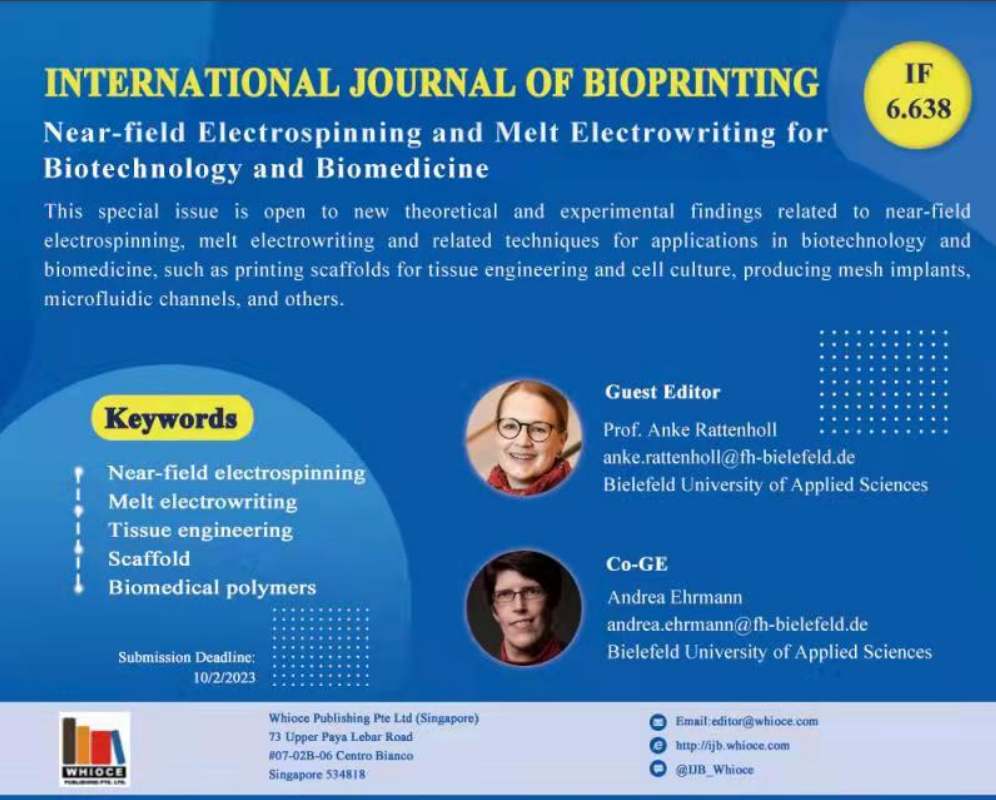
Dear Colleagues
Near-field electrospinning and melt electrowriting offer new possibilities to build 3D shapes from polymeric nano- or microfibers. Opposite to conventional electrospinning, near-field electrospinning enables combining very fine fibers with much larger pore sizes, tailored according to the requirements of cells, which makes such scaffolds highly interesting for cell culture and tissue engineering applications. Melt electrowriting can be used to draw microfibers fibers from a solution or a melt through an electrostatic field and to deposit them with high accuracy.
This special issue is open to new theoretical and experimental findings related to near-field electrospinning, melt electrowriting and related techniques for applications in biotechnology and biomedicine, such as printing scaffolds for tissue engineering and cell culture, producing mesh implants, microfluidic channels, and others.
PVDF/AgNP/MXene composites-based near-field electrospun fiber with enhanced piezoelectric performance for self-powered wearable sensors
A holistic model for melt electrowritten threedimensional structured materials based on residual charge
Evaluation of surgical fixation methods for the implantation of melt electrowriting-reinforced hyaluronic acid hydrogel composites in porcine cartilage defects



